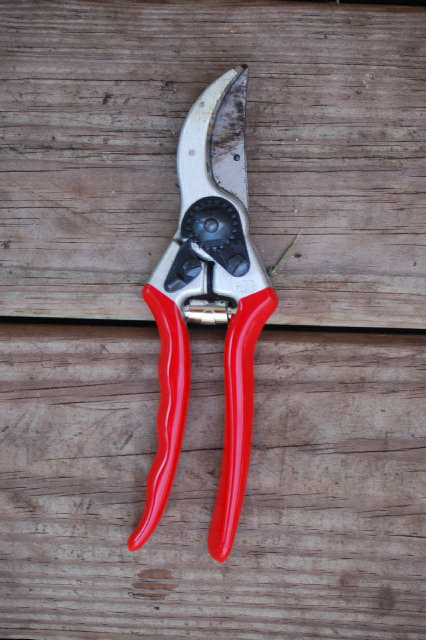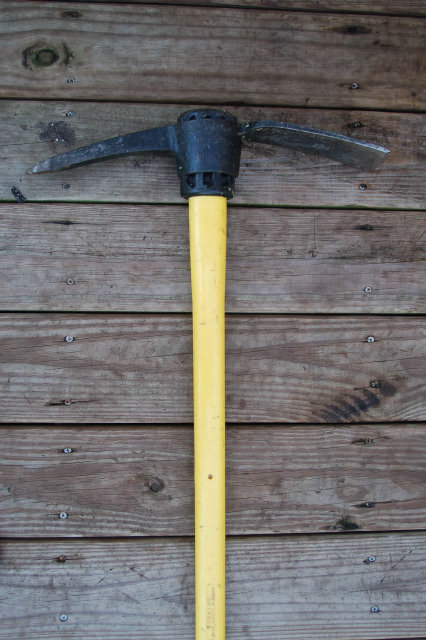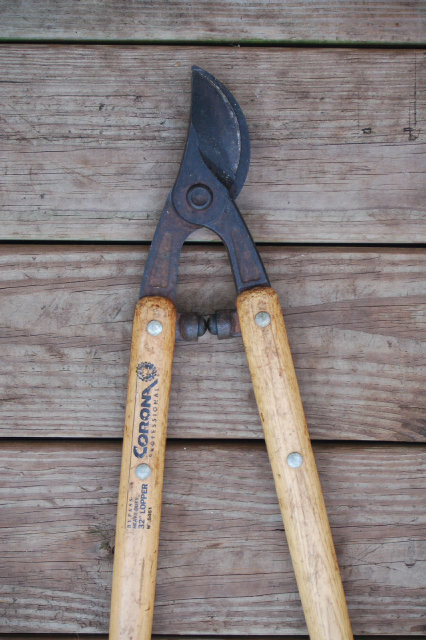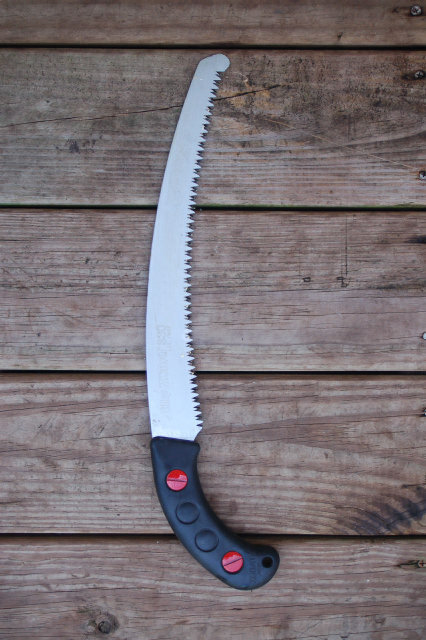Essential tools of the trade

As published in The Miami Herald
When buying garden tools, make a conscious decision to buy the best tool you can afford.
Choosing the more expensive piece may save more than money. Saving a few dollars on a tool may cost you hours by making your work harder and longer. Every tool has a low grade, middle grade and a professional grade. Higher grade tools will last longer and save you money in the long run. They can also be taken apart, sharpened and cleaned, while a low-grade tool is usually tossed when it becomes worn.
Horticultural tools can be used for everything from taking down a rogue Brazilian pepper to moving a mountain of mulch.
Tools you need:
• Hand pruner: This is the one tool a home gardener cannot live without. Have one on hand when walking your yard in case you see something that needs immediate attention. The hand pruner can cut branches three-quarters of an inch and smaller. Larger cuts are made with a lopper or a saw. The hand pruner should be made of high-grade metal and should be able to be taken apart to be cleaned and sharpened. Make sure individual parts are available for sale for a pruner before you buy it. That way if a part goes bad, you can replace the part rather than destroy the entire tool. By-pass pruners — or pruners that have a cutting action similar to scissors — are favored over anvil pruners, as they tend to pinch the branch before cutting it, thereby crushing tissue.
 |
| High quality hand pruners are able to be taken apart to be sharpened. |
• Lopper: This tool is used for branches three-quarters of an inch to two inches. Again, a by-pass tool is preferable to an anvil tool. The handles should be made of a durable material, and the blade should be able to be sharpened and cleaned with little difficulty.
• Hand saw: This is used to cut branches two inches and larger. Saw teeth should be designed to cut on the pull and push stroke. Look for teeth that are sharpened alternately. The saw should have a gentle arc from handle to blade that allows the saw to grip or “bite” into the branch being cut. The saw should not fold, as folding saws will sometimes collapse when you are working, resulting in injury.
• Pick-axe: South Florida’s rocky soil makes this the most important of the digging tools. The pick-axe’s head consists of a long metal spike, which melds into a sharp, flat wedge. Both sides are useful for breaking up limestone. The handle should be made of high-quality wood or fiberglass. Fiberglass handles tend to flex a little while in motion, which will result in more power. The pick-axe prepares muck, marl and limestone for the shovel.
 |
| This pick-axe has a fiberglass handle that allows for greater power and durability. |
• Shovel: The shovel hauls away the crushed rock and soil left behind by the swinging pick-axe. It can also be used to move large piles of soil or sand. The traditional rounded head is used for digging, while the flat shovel is best employed in moving large piles of earth off driveways or flat surfaces.
• Hoe: This tool is useful for removing grass or weeds as well as turning soil in a vegetable garden or planting bed. A heavy head is favored over a lighter one as the heavier head works with gravity to add force to each downswing.
• Leaf rake: The metal-tined rake is used to remove leaves or grass clippings, which can then be used as mulch in other areas.
 |
| Loppers should have bypass rather than anvil cutting mechanisms with durable handles. |
• Hard-rake: This tool is used to smooth out planting beds, vegetable gardens or even to remove rocks from soil beds. Heavy pressure is produced on the neck of this tool while it’s in use, so purchase a hard-rake with a good head-to-handle connection and a strong handle.
• Pitchfork: The pitchfork can quickly move mulch or piles of plant debris. Purchase one with a strong handle and a large head. The larger the head, the more debris you can move with one scoop.
• Wheelbarrow: This is the work horse in your stable of tools. Wheelbarrows can cart mulch, soil, weeds and general plant debris. Two-wheeled carts are not as mobile as the traditional one-wheel cart and should be avoided. Plastic wheelbarrows are slightly lighter than metal and will not rust.
• Chainsaw: This tool is best used when removing entire trees. A good chainsaw has a safety break that stops the chain from moving if the saw kicks back while engaged. Proper chain sharpening and maintenance are important. A high-quality saw is useless with a dull chain. Tree trimming should be completed with a hand saw rather than a chainsaw because a chainsaw can cause improper, hasty cuts. This tool can be extremely dangerous, so proper safety equipment and training are required to operate it.
 |
| Hand saws should be curved and sharpened to cut on the push and the pull stroke. |
SHARPENING, CLEANING
Owning professional grade tools bring the responsibility of caring for them by regularly cleaning and sharpening them. Hand pruners and loppers should be taken apart, cleaned and sharpened when they become dull. Digging tools such as the pick-axe and the round-headed shovel should also be periodically sharpened and cleaned. Saws are difficult to sharpen, and their blades may be replaced when sufficiently worn. Chainsaws should be cleaned and have their chains sharpened by a reputable dealer, as they become dull after several uses. It is a good idea to keep more than one chain on hand and sharpen them alternately.
Cleaning your tools can be as simple as applying a coat of WD-40 and scrubbing with a wire brush. Sharpening tools is a more difficult task that requires some skill. Digging tools can be sharpened with a file. Work to restore the angle that the tool’s blade held originally by gently filing in one direction along the surface of the blade. Hand pruners and loppers need to be sharpened using a well-oiled sharpening stone. Generally a by-pass pruner will have a beveled edge and a flat edge. The flat edge should be passed over the stone with the entire surface of the blade touching the stone. The beveled side should be passed over the stone at an angle of approximately 23 degrees, which should match the original bevel of the blade. Continue passing each side over the oiled stone until the blade becomes sharpened.
